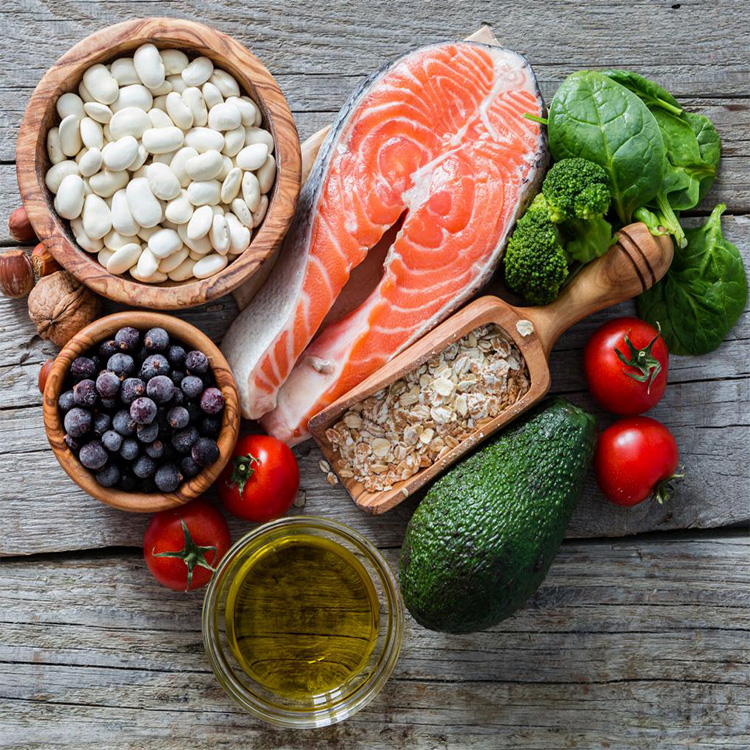If you’re new to training, working out, and eating right, it’s easy to think that you should be following a fat-free diet to lose weight, build muscle, or shred fat.
Just take a trip to the grocery store and pay attention to the food packages. And you’re bound to see low-fat and fat-free on the labels.
Should you try and avoid all foods that contain fat?
Are some fats better than others?
How much fat should you be eating to achieve your fitness goals?
Let’s take a closer look at the power of healthy fats.
Not all fats are created equal
For years, the American Heart Association and other leading health organizations recommended a low-fat diet to protect against heart disease.
And with heart disease among the leading cause of death in places like the United States and Australia, you can see why the fat-free diet trend has received so much attention
Bad fats
In a recent study, researchers found that simply avoiding unhealthy fats (saturated fats and trans fats), isn’t enough to prevent heart disease.[1].
These bad fats won’t help you achieve your health and fitness goals either. Take a look at the typical shred diet, and you’re not going to find greasy burgers, decadent desserts, french fries, pizza, or pastries on the menu.
Here’s another way to look at bad fats that might help you rethink your diet when you’re trying to build muscle, lose weight, or get ripped:
“Trans fats have no known health benefits and there is no safe level of consumption. Today, these mainly man-made fats are rapidly fading from the food supply.”[2]
Good fats
Fortunately healthy fats (polyunsaturated fats) can protect your health by lowering bad cholesterol and triglycerides, and prevent the kind of sludge build-up in your arteries linked to heart disease, stroke, diabetes, inflammation and certain types of cancer.
If you’re serious about building a better body, eating more healthy fats found in things like avocados, egg whites, peanut butter, nuts, fish, and olive oil, will make a difference.[2]
Fat Ratios for Fitness
How much fat should you be eating to achieve your goal?
Sticking to your daily calorie and macronutrient goal is one of the most important things you can do to transform your body. But it’s something a lot of people struggle with.
It’s one reason I create customized meals plans for all my clients, and encourage buying in bulk, food tracking, and prepping all your meals a few days at a time.
Based on your fitness goals and recommended daily calorie intake, your diet should include a ratio of fat, carbs and protein that looks something like this:
Build Muscle: Macronutrient Ratio
Fat: 15 to 25 percent
Protein: 25 to 35 percent
Carbs: 40 to 60 percent
Maintenance Mode: Macronutrient Ratio
Fat: 25 to 35 percent
Protein: 25 to 35 percent
Carbs: 30 to 50 percent
Fat Loss: Macronutrient Ratio
Fat: 30 to 40 percent
Protein: 40 to 50 percent
Carbs: 10 to 30 percent
Take a look at these macronutrient ratios, and you’ll see that regardless of your goal, you should be eating some healthy fats. (Note these are general guidelines. Your macros should be based on your body type, goals, and other factors.)
And there’s a long list of reasons you need healthy fat in your diet to achieve your fitness goals. Healthy fats help your body:[3]
1. Produce energy.
When you limit the amount of carbs you eat, it produces a metabolic condition called ketosis. And your body uses fat as an energy source instead of glucose.
2. Absorb nutrients from food.
Fat helps you maximize the amount of nutrients your body can absorb from food and supplements. And that’s important for muscle growth, repair, and recovery when you’re training hard.
3. Increase metabolism.
Foods that contain polyunsaturated omega-3 fatty acids and monounsaturated fats (like coconut, avocado, dark chocolate, fish, and dairy products) can have a positive impact on metabolism.
4. Control hunger.
Research shows that eating healthy fats can help curb your appetite, and help you feel fuller longer by regulating the hunger hormones ghrelin and leptin. It’s one reason a handful of nuts between meals can help curb cravings and keep you on track.[4]
5. Support hormone function.
Want to improve the release of growth hormone after a workout? Eating the right amount of healthy fats can help. If you’re not eating enough fat, it can actually work against you, slow metabolism, and increase your risk for health problems.
Need help calculating your macros (protein, fats, and carbs) to get results? Check out my customized nutrition and training plans to build muscle, shred fat, or transform your body.
References
- DiNicolantonio, J. (2013). The cardiometabolic consequences of replacing saturated fats with carbohydrates or Ω-6 polyunsaturated fats: Do the dietary guidelines have it wrong?. British Medical Journal. From: http://openheart.bmj.com/content/1/1/e000032
- Harvard Health Publications. (20135). The truth about fats: The good, the bad, and the ugly. Harvard Health Publications. From: https://www.health.harvard.edu/staying-healthy/the-truth-about-fats-bad-and-good
- LeCovin, G. (2015). What’s the skinny on essential fats? National Academy of Sports Medicine. From: http://blog.nasm.org/nutrition/whats-skinny-essential-fats/
- Samra, R. (2010). Fats and satiety. Fat Detection: Taste, Texture, and Positive Ingestion Effects. Boca, Raton, FL: CRC Press Taylor & Francis. From: https://www.ncbi.nlm.nih.gov/books/NBK53550/.

